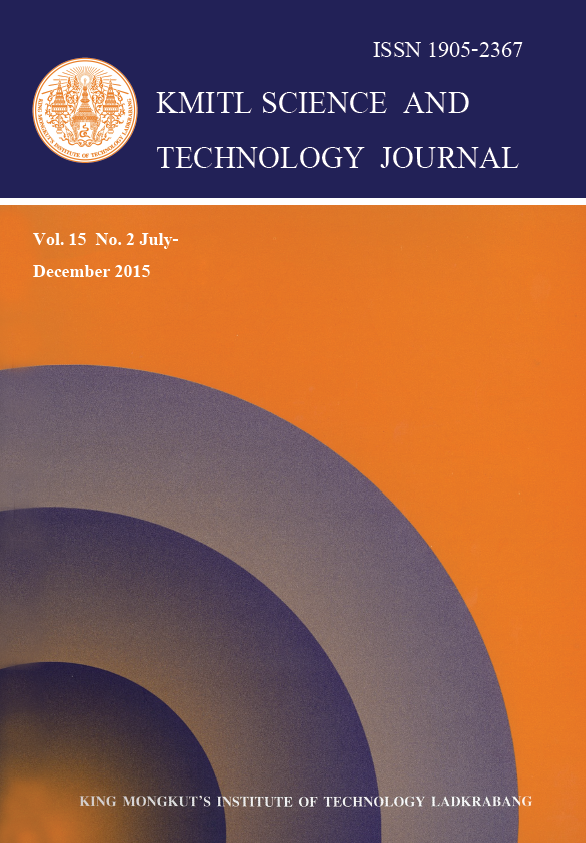Potentiality of Endophytic Actinomycetes Isolated from Sugar Cane
Main Article Content
Abstract
Endophytic actinomycetes residing in plants may be originated from soil around plant root. They are not act as symbiosis but mutually associated as free living microbes. These actinomycetes may be an efficient source promoting growth through secretion of plant growth regulators. The objectives of this study were isolation characterization and determination the beneficial properties; the production of bioactive compound, indole-3-acetic acid (IAA), siderophore and biosolubilizing activities of insoluble phosphate and leonardite, of endophytic actinomycetes. The results showed that 102 endophytic actinomycetes were isolated from root, leaf and stem of sugar cane. The major population was found in root followed by stem and leaf, respectively. Based on its morphological and chemotaxonomical analysis, 86 isolates were belonged to member of genus Streptomyces while the other 16 isolates were classified as non-Streptomyces. Among 102 of isolated endophytic actinomycetes, 46 isolates were able to produce indole-3-acetic acid (IAA), a plant growth promoting substance. The maximum production of 100 ± 0.34 µg/mL was produced from isolate SCR5. The siderophore, an iron chelating compound was detected for 93 isolate from those of endophytic actinomycetes when cultured on CAS agar medium with positive zone less than 20 mm. Thirty seven isolates showed abilities to solubilize insoluble phosphate and only one isolate can solubilize leonardite as low quality coal. The isolate SCR5 was the potential strain as a plant growth promoting activity such as phosphate solubilizing activity, IAA and siderophore production.
Keywords: endophytic actinomycetes, sugar cane, indole-3-acetic acid, siderophore, phosphate solubilizing, leonardite
*Corresponding author: E-mail: fagrkks@ku.ac.th
Article Details
Copyright Transfer Statement
The copyright of this article is transferred to Current Applied Science and Technology journal with effect if and when the article is accepted for publication. The copyright transfer covers the exclusive right to reproduce and distribute the article, including reprints, translations, photographic reproductions, electronic form (offline, online) or any other reproductions of similar nature.
The author warrants that this contribution is original and that he/she has full power to make this grant. The author signs for and accepts responsibility for releasing this material on behalf of any and all co-authors.
Here is the link for download: Copyright transfer form.pdf


